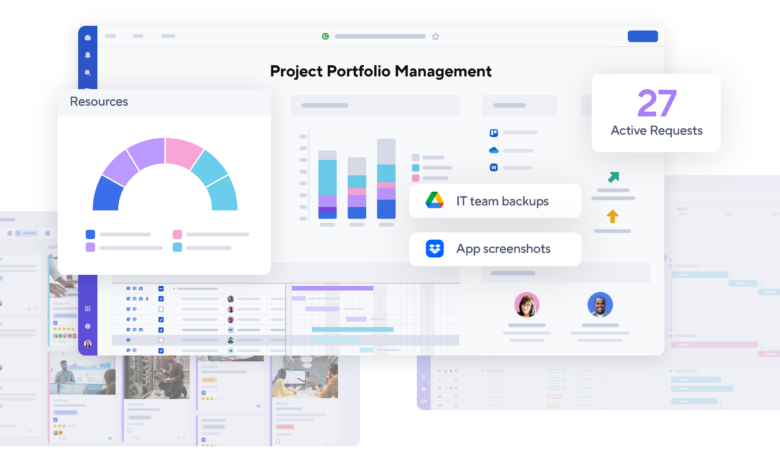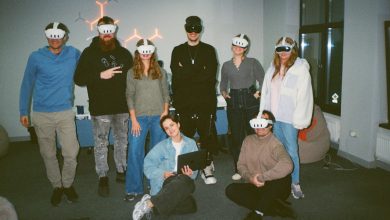
As AI continues to revolutionise the way businesses operate, one thing is clear: the future of work is rapidly changing and businesses are under more pressure to keep up than ever before. However, many organisations are facing a crucial challenge that risks standing between them and future success – closing the skills gap between their technology and their workforce, that needs to harness it. It’s not just about mastering AI tools; employees must also understand how and when to use them to enhance their work.
The development of AI literacy has become essential as organisations face ongoing challenges, including macroeconomic factors, changing data policies, and competition for skilled AI professionals. With rising workforce expectations around flexible work and career growth opportunities, it’s evident that organisations must rethink how they prepare their teams and how employees can benefit from and complement AI adoption.
AI adoption: The skills gap is real
We’re already seeing AI transform business operations, from automating data analysis to streamlining content creation. A recent McKinsey report highlights that by 2030, up to 30% of work hours across various economies could be automated, having the potential to reshape job roles on a significant scale. However, there’s a clear gap emerging between the technology and the workforce’s ability to effectively utilise it. It’s not just about tech know-how; employees also need a clear understanding of where and how to apply AI to enhance their work.
Rather than replacing employees, AI should be seen as a tool that amplifies human capabilities. For instance, AI can be a co-pilot in the workplace, assisting with tasks, enhancing efficiency, and providing valuable insights – all while keeping humans in control of the overall direction. Research from the IBM Institute for Business Value suggests that organisations that focus on user-friendly AI deployment see 44% higher performance in key areas like employee retention and revenue growth.
Rethinking Workforce Development for AI
As AI becomes more prevalent, it is clear that traditional training programs aren’t enough. To accommodate the diverse needs of a workforce with varying roles and levels of technical expertise, training programs must adapt. Rather than just teaching people about how to use the tools, it’s also about making sure AI adoption is both effective and ethical.
One solution is to create flexible, dynamic training programs. These programs should go beyond the basics, incorporating real-world applications, ethical considerations, and a willingness to experiment with new ideas. The goal is to build a culture of continuous learning where employees feel empowered to engage with AI technologies in a safe and supportive environment.
The human touch in an AI-driven world
With AI taking over routine tasks, workers may worry about their place in the changing landscape. These concerns are valid, however, the human element is more crucial than ever before. While AI may excel at automating repetitive tasks, there are aspects of work, such as creativity, empathy, and strategic thinking, that require a human-first approach.
To ease these concerns, businesses can help employees understand how they fit into the new AI-powered environment. For example, some companies have seen success through practical demonstrations, such as having human experts fact-check AI-generated responses, reinforcing the idea that AI is a tool rather than a replacement. This exercise helps professionals view AI as a useful starting point, while also acknowledging its shortcomings, therefore validating employees’ irreplaceable unique human expertise.
Workers should also be encouraged to recognise that their skills – particularly soft skills such as emotional intelligence and leadership – are becoming even more valuable as automation takes over routine tasks. Employees who focus on honing these skills will continue to stand out, even as AI becomes more widespread.
Leadership: The key to successful AI integration
The role of leaders in AI adoption cannot be overstated. Leaders not only set the tone for AI integration but also pave the way for their teams to succeed. By modeling AI adoption, executives can inspire their teams to embrace the technology and invest in their own learning. This approach helps build trust and buy-in from employees, who are more likely to engage with AI when they see their leaders also actively participating in the learning process.
The development of clear AI strategies is also key. AI roadmaps should not only outline how AI tools will be used but also address potential challenges, such as ethical concerns and the balancing of automation with human input. The future of work will require a delicate balance between technology and human insight, and leaders must guide this integration from the top-down.
Seize the moment: Act now to close the AI skills gap
The time to act is now. If businesses wait too long to address the AI skills gap, they risk falling behind in an increasingly competitive market. By taking proactive steps to build AI literacy among their teams, organisations can position themselves as leaders in this transformative wave. Investing in workforce development now will not only prepare employees for the future of work but also help businesses stay ahead of the curve.
The businesses that embrace AI adoption and build a culture of learning and innovation will be the ones that thrive in an AI-driven world. Taking action today is the key to creating a successful, sustainable future for both employees and organisations alike.




